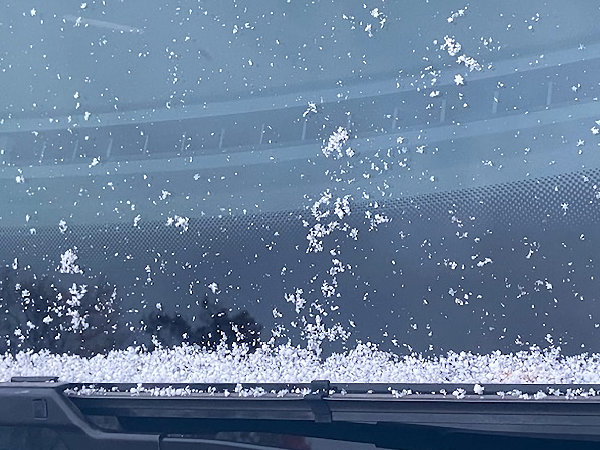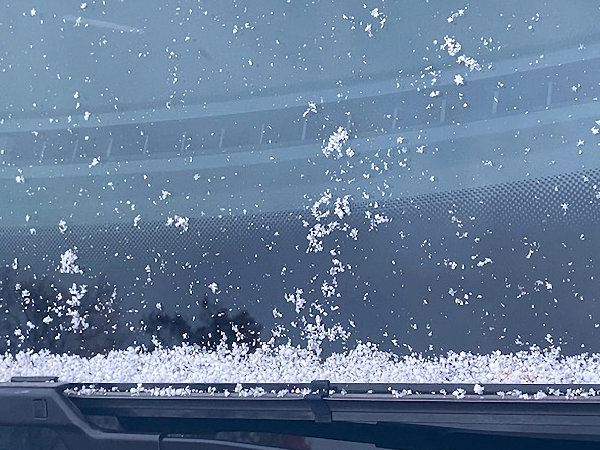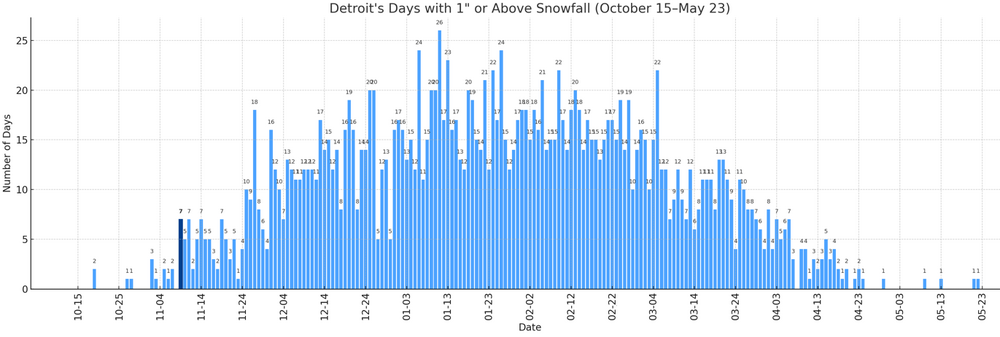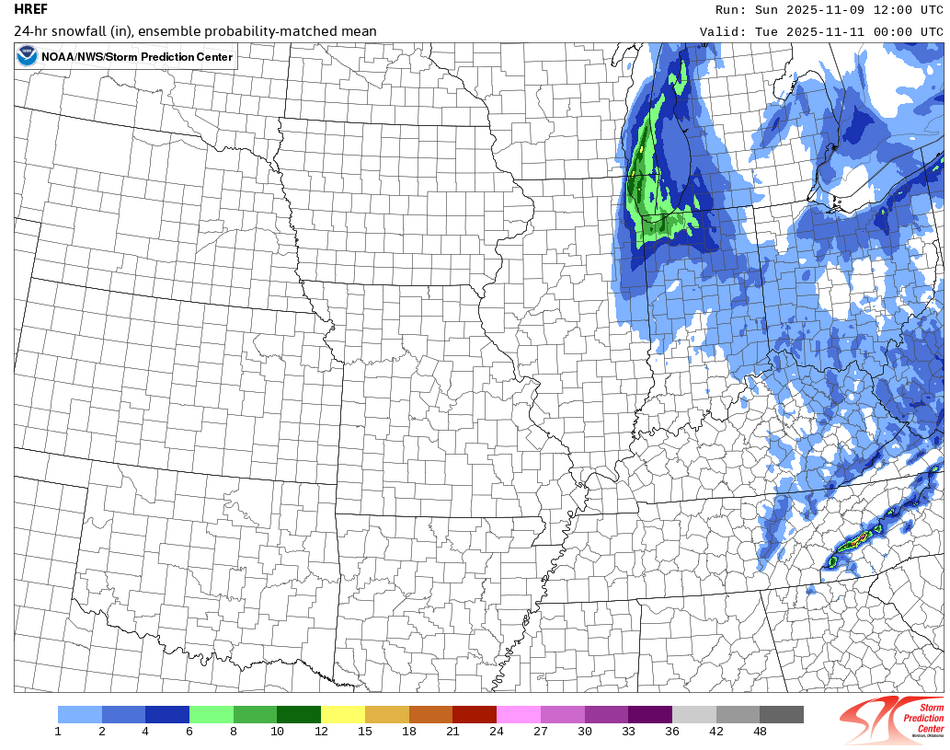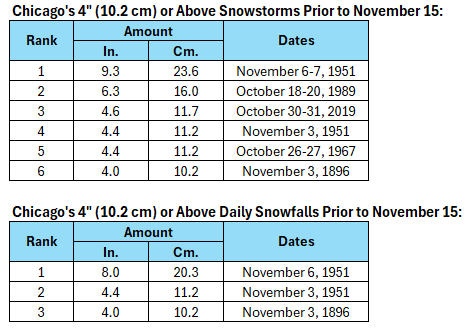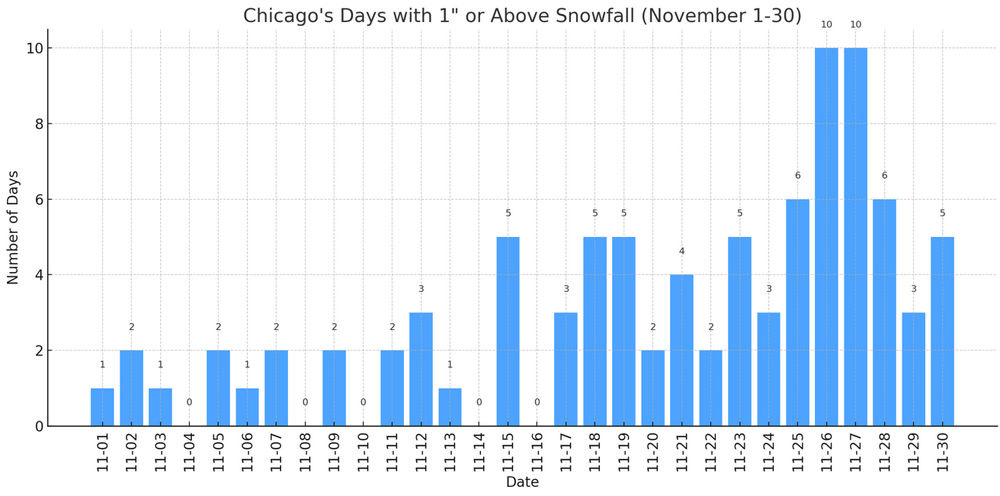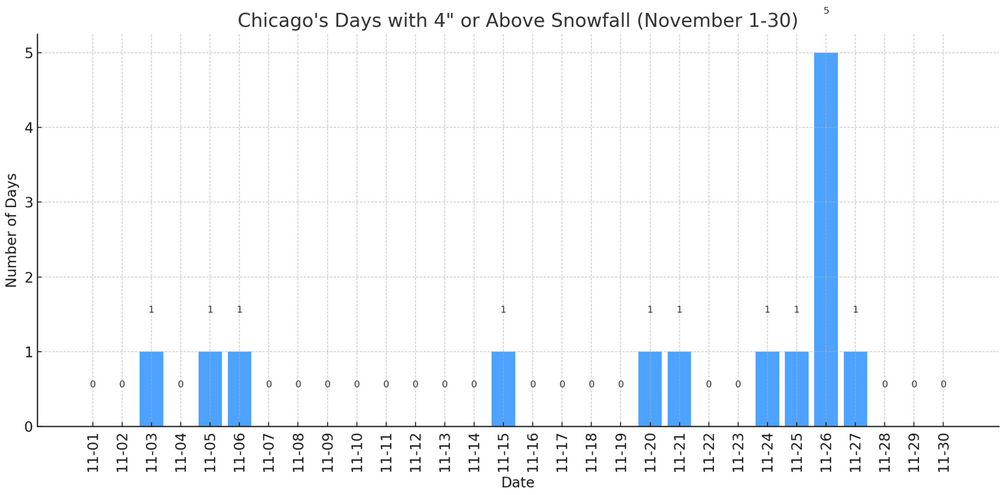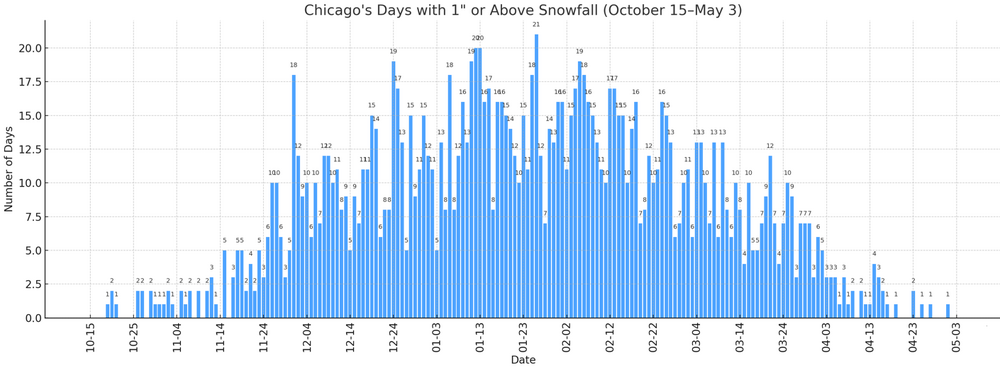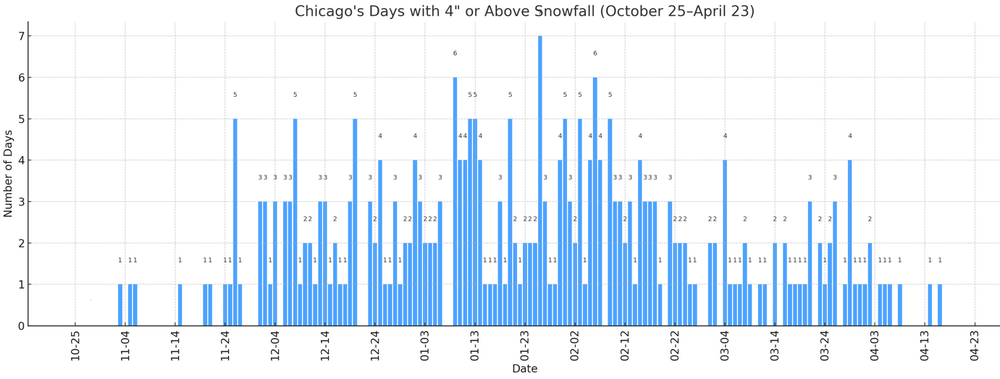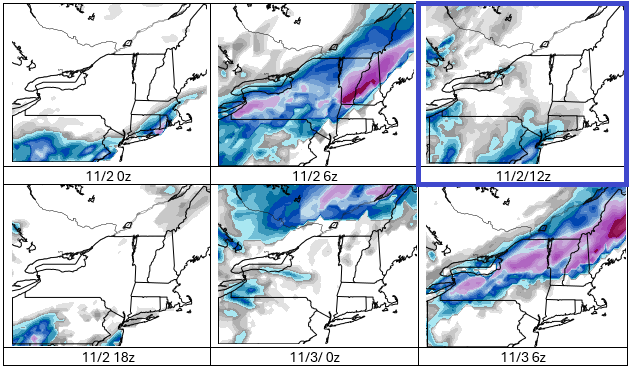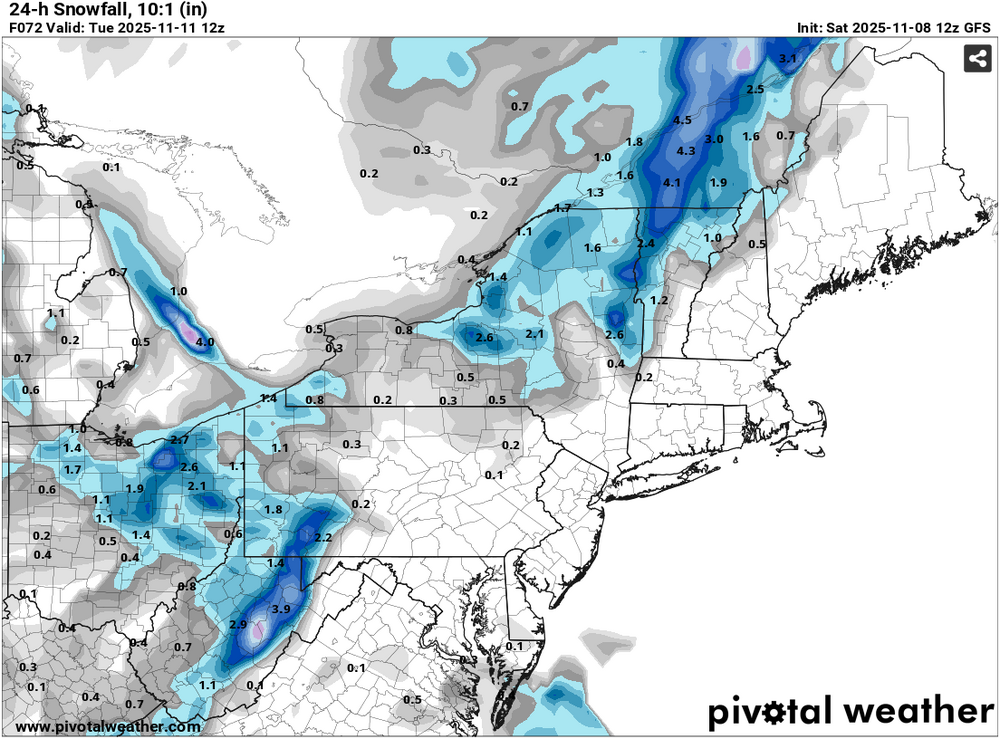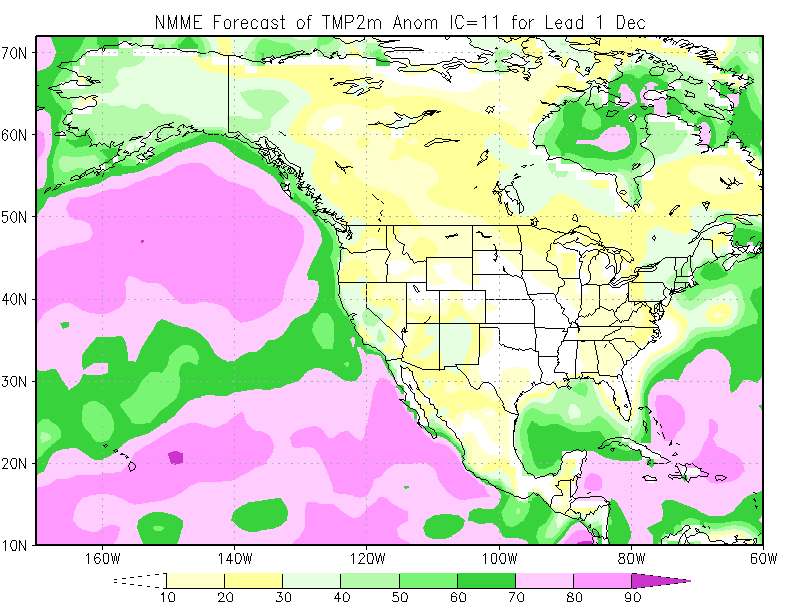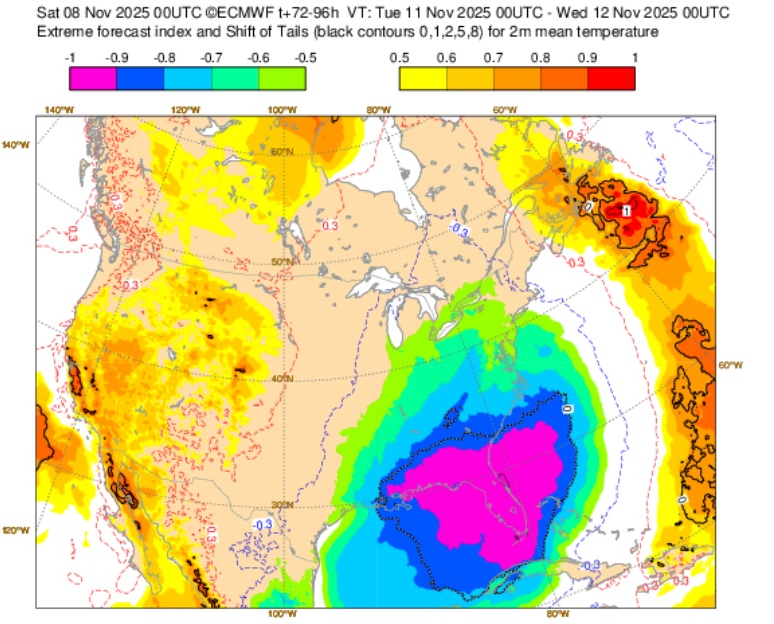-
Posts
22,823 -
Joined
Content Type
Profiles
Blogs
Forums
American Weather
Media Demo
Store
Gallery
Everything posted by donsutherland1
-

2025-2026 ENSO
donsutherland1 replied to 40/70 Benchmark's topic in Weather Forecasting and Discussion
Jacksonville has experienced an earlier first freeze than New York City (Central Park) for only 12th time on record since winter 1871-1872. The last time that occurred was during winter 2016-2017 (Jacksonville: Nov 21; NYC: Dec 9), also a La Niña winter. -
-
Savannah saw the temperature dip to 28° this morning. That broke the daily record of 31° from 1968. It is also the coldest temperature so early in the season since November 9, 1976 when the mercury fell to 26°.
-
-
This evening, the temperature fell into the 30s for the first time this season in New York City. Last year's first such reading occurred on November 13th. The 1991-2020 normal first such date is October 24th. The temperature will likely bottom out near freezing in New York City. The normal first freeze occurs on November 21st. Outside the City, widespread 20s are likely. Highs tomorrow will only reach the upper 30s and lower 40s. Parts of the region could see some snow flurries or even some snow showers. It will then turn somewhat milder. Wednesday through Friday will see highs mainly in the upper 40s to lower 50s. The ENSO Region 1+2 anomaly was -0.2°C and the Region 3.4 anomaly was -0.7°C for the week centered around November 5. For the past six weeks, the ENSO Region 1+2 anomaly has averaged -0.07°C and the ENSO Region 3.4 anomaly has averaged -0.55°C. La Niña conditions will likely continue through at least mid-winter. The SOI was +3.94 today. The preliminary Arctic Oscillation (AO) was -0.955 today. Based on sensitivity analysis applied to the latest guidance, there is an implied 57% probability that New York City will have a cooler than normal November (1991-2020 normal). November will likely finish with a mean temperature near 47.4° (0.6° below normal). Supplemental Information: The projected mean would be 0.3° below the 1981-2010 normal monthly value.
-
A storm brought snow from Chicago to Toronto earlier today. The stage is now set for a signifant to major lake effect snow event around Lake Michigan tonight into tomorrow. That storm will drag a strong cold front will across the region this evening and tonight bringing some showers and perhaps even a thunderstorm. Following its passage, an early taste of winter-like temperatures will be in store for a short time. As colder air drills into the region tomorrow, the temperature will fall through the lower 50s and through the 40s. A few rain showers are possible. Well north and west of New York City, some snow showers or snow flurries are possibe. Tuesday will be unseasonably cold. The temperature will rise from the lower 30s into just the lower 40s in New York City. Outside the City, widespread lows in the 20s are possible Tuesday morning. Wednesday through Friday will see highs mainly in the upper 40s to lower 50s. The Deep South could see the temperature fall to record low levels, particularly on Tuesday. Parts of Florida will likely see a freeze. The ENSO Region 1+2 anomaly was +0.1°C and the Region 3.4 anomaly was -0.6°C for the week centered around October 29. For the past six weeks, the ENSO Region 1+2 anomaly has averaged -0.05°C and the ENSO Region 3.4 anomaly has averaged -0.52°C. La Niña conditions will likely continue through mid-winter. The SOI was +7.95 today. The preliminary Arctic Oscillation (AO) was -1.495 today. Based on sensitivity analysis applied to the latest guidance, there is an implied 54% probability that New York City will have a cooler than normal November (1991-2020 normal). November will likely finish with a mean temperature near 47.6° (0.4° below normal). Supplemental Information: The projected mean would be 0.1° below the 1981-2010 normal monthly value.
-

11/8-11/10 First Snow and Lake Effect Event
donsutherland1 replied to Geoboy645's topic in Lakes/Ohio Valley
Very beautiful pictures. There is always beauty in the snow. -

11/8-11/10 First Snow and Lake Effect Event
donsutherland1 replied to Geoboy645's topic in Lakes/Ohio Valley
With 1.2" of snow earlier today, Detroit saw 1" or more snowfall for the 7th time on record for November 9. The prior cases for November 9 snowfall of 1" or above are: 1894 2.0" 1913 1.8" 1921 5.3" (daily record; 3rd biggest daily snowfall on record prior to November 15; 8th biggest daily snowfall on record for November) 1933 1.3" 1971 1.6" 2018 1.3" November 9 is the earliest date with 7 or more such snowfalls. -
Congratulations on the new job.
-

11/8-11/10 First Snow and Lake Effect Event
donsutherland1 replied to Geoboy645's topic in Lakes/Ohio Valley
-
The LES event will follow from the circulation of a synoptic event that brought snow from Chicago to Detroit and will deliver an appreciable/significant snowfall in Ottawa, Montreal and Quebec City.
-

11/8-11/10 First Snow and Lake Effect Event
donsutherland1 replied to Geoboy645's topic in Lakes/Ohio Valley
Yes, I agree. I don't see O'Hare getting the top-end accumulations. I still think 4" or above is reachable, but not guaranteed given this setup. -

11/8-11/10 First Snow and Lake Effect Event
donsutherland1 replied to Geoboy645's topic in Lakes/Ohio Valley
For reference, some historic data for Chicago: Frequency Data for Select November Daily Snowfall Amounts: And the histograms for the entire snow season: -

2025-2026 ENSO
donsutherland1 replied to 40/70 Benchmark's topic in Weather Forecasting and Discussion
OT: My flashdrive that contained the ENSO data became unreadable today. Fortunately, I have a backup that is reasonably up-to-date. Pre-device failure might have led to a corruption of the data e.g., the wrong ENSO values for some of the cases referenced previously in this discussion. In the meantime, it looks like Savannah could see its earliest first freeze since 2010. -

11/8-11/10 First Snow and Lake Effect Event
donsutherland1 replied to Geoboy645's topic in Lakes/Ohio Valley
Ottawa has a snowfall warming for 4"-8". Detroit to Toronto should also see measurable snowfall. Winter is getting off to a good start parts of the Great Lakes Region. From Environment Canada: 4:00 PM EST Saturday 8 November 2025 Snowfall Warning in effect for: Ottawa North - Kanata - Orléans Significant snowfall expected Sunday. What: Snowfall amounts of 10 to 20 cm. When: Beginning Sunday morning and continuing into Sunday night. Additional information: A low pressure system will bring snowfall to parts of southern Ontario on Sunday. Areas near the St. Lawrence River may see snow mix with ice pellets or freezing rain at times Sunday evening, leading to reduced snowfall amounts in that area. Motorists should expect difficult winter driving conditions and adjust travel plans accordingly. Poor weather conditions may contribute to transportation delays. Visibility will likely be reduced at times. -
Welcome to the NY area.
-
A strong cold front will cross the region tomorrow bringing this season's coldest temperatures so far early next week. Its passage could trigger some showers or a thunderstorm tomorrow into tomorrow night. The temperature will likely top out in the upper 50s and lower 60s tomorrow. Following the frontal passage, lows would fall well into the 30s in New York City while highs struggle to reach the lower 40s during the height of the early-season chill on Tuesday. The Deep South could see the temperature fall to record low levels, particularly on Tuesday. Parts of Florida will likely see a freeze. The ENSO Region 1+2 anomaly was +0.1°C and the Region 3.4 anomaly was -0.6°C for the week centered around October 29. For the past six weeks, the ENSO Region 1+2 anomaly has averaged -0.05°C and the ENSO Region 3.4 anomaly has averaged -0.52°C. La Niña conditions will likely continue through mid-winter. The SOI was +18.89 today. The preliminary Arctic Oscillation (AO) was -1.254 today. Based on sensitivity analysis applied to the latest guidance, there is an implied 54% probability that New York City will have a cooler than normal November (1991-2020 normal). November will likely finish with a mean temperature near 47.6° (0.4° below normal). Supplemental Information: The projected mean would be 0.1° below the 1981-2010 normal monthly value.
-
Under bright sunshine, deep blue skies, and a light breeze, the temperature soared into the lower and middle 60s across the New York City area. Some photos from the New York botanical Garden:
-
Revisiting the above post now that some time has passed. The general idea about being cautious about outlier model runs that lack support holds. Today's 12z run of the GFS: The National Blend of Models shows NYC's temperatures falling through the 50s during the showers/rain. That's somewhat warmer than previously shown on the guidance, but 40s remains a possibility. The outlier notion of an accumulating snowstorm is not plausible.
-

2025-2026 ENSO
donsutherland1 replied to 40/70 Benchmark's topic in Weather Forecasting and Discussion
-
-
A quick note: Denver finally surpassed its monthly record that was set in 2006 this year. On November 2, the mercury topped out at 83° in Denver.
-
A few showers are possible overnight as a warm front moves across the region. The weekend will be unseasonably mild with tomorrow being the warmest day. Highs Tomorrow will likely reach the lower and perhaps middle 60s. Newark could again approach or reach 70°. A strong cold front will then bring this season's coldest temperatures so far early next week. It could trigger some showers or a thunderstorm Sunday evening or Sunday night. Afterward, lows would fall well into the 30s in New York City while highs struggle to reach the middle and upper 40s during the height of the early-season chill. The ENSO Region 1+2 anomaly was +0.1°C and the Region 3.4 anomaly was -0.6°C for the week centered around October 29. For the past six weeks, the ENSO Region 1+2 anomaly has averaged -0.05°C and the ENSO Region 3.4 anomaly has averaged -0.52°C. La Niña conditions will likely continue through mid-winter. The SOI was +29.26 today. The preliminary Arctic Oscillation (AO) was -0.721 today. Based on sensitivity analysis applied to the latest guidance, there is an implied 55% probability that New York City will have a cooler than normal November (1991-2020 normal). November will likely finish with a mean temperature near 47.5° (0.5° below normal). Supplemental Information: The projected mean would be 0.2° below the 1981-2010 normal monthly value.






